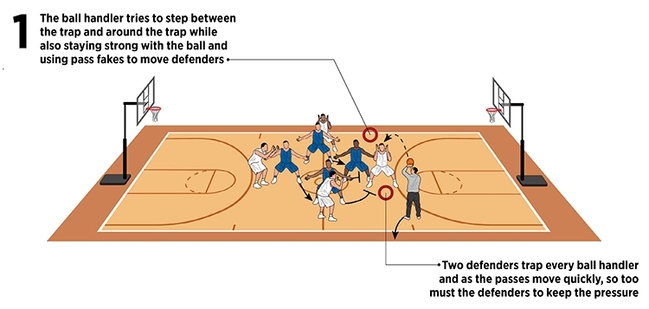
Fencing Footwork Drills: Mastering the Basics for Enhanced Performance
Fencing, a sport demanding precision, speed, and tactical prowess, heavily relies on efficient footwork. A fencer’s ability to move swiftly and strategically across the piste directly impacts their offensive and defensive capabilities. While bladework and strategy are crucial, mastering fundamental footwork drills forms the bedrock of a successful fencing career. This article explores a range of footwork drills, categorized for clarity and progressive development, enabling fencers of all levels to refine their movement and elevate their performance.
I. Fundamental Footwork Drills: Building the Foundation
Before tackling advanced maneuvers, mastering basic footwork is paramount. These drills emphasize proper technique, balance, and coordination, laying the groundwork for more complex movements.
-
The Advance and Retreat: This fundamental drill involves stepping forward with the leading foot (typically the right foot for right-handed fencers), followed by bringing the trailing foot to meet the lead foot, maintaining a balanced stance. The retreat is executed in reverse, stepping backward with the trailing foot and bringing the lead foot to align. Repeat this sequence for several repetitions, focusing on smooth transitions and maintaining a low center of gravity. Variations include performing this drill with lunges, adding dynamism and explosiveness to the movements.
-
The Side Step: Essential for lateral movement, the side step involves moving laterally to the right or left, maintaining a balanced and ready stance. Begin with a small side step, ensuring a firm base and avoiding excessive twisting. Gradually increase the distance of the side step, maintaining fluidity and control. This drill enhances agility and responsiveness, crucial for adapting to an opponent’s movements.
-
The Lunge: A critical offensive maneuver, the lunge involves extending the lead leg forward, while maintaining a straight line from the shoulder to the tip of the leading foot. The back leg should be straightened, providing power and stability. The lunge should be explosive, yet controlled, allowing for a swift and precise attack. Practice lunging in different directions, ensuring consistent form and balance.
-
The Flèche: A rapid, explosive advance, the flèche involves a powerful forward lunge, emphasizing speed and penetration. This drill requires explosive leg power and precise coordination. Focus on maintaining balance and control throughout the movement, ensuring a swift return to the ready position.
-
Footwork with Bladework Integration: Once comfortable with the fundamental movements, integrate bladework. Combine the advance, retreat, and side steps with simple parries and attacks. This will train the body to coordinate footwork with bladework, a crucial aspect of effective fencing. Begin with simple attacks and parries, gradually increasing the complexity.
II. Advanced Footwork Drills: Enhancing Agility and Speed
With the foundations firmly established, fencers can progress to more advanced drills that focus on speed, agility, and tactical responsiveness.
-
Rapid Footwork Drills: These drills aim to improve speed and reaction time. One effective method involves performing a series of rapid advances, retreats, and side steps, following a pre-determined sequence or responding to verbal commands. This enhances agility and the ability to change direction quickly.
-
Combination Footwork Drills: Combine different footwork movements in rapid succession. For instance, perform a sequence involving an advance, a side step, and a retreat, followed by a lunge. This develops fluidity and seamless transitions between different movements.
-
Footwork with Opponent Simulation: Incorporate an opponent’s simulated actions. Have a partner call out directions or simulate attacks, requiring immediate and appropriate footwork responses. This enhances adaptability and tactical decision-making. This could be a coach or a fellow fencer lightly tapping your weapon to simulate an attack.
-
Footwork with Target Practice: Practice footwork while aiming at targets. Place targets at different distances and angles, encouraging precision and accuracy in both movement and bladework. This enhances the coordination between footwork and target acquisition.
-
The Pivot: This involves rotating the body on the balls of the feet, facilitating rapid changes in direction without losing balance. Practice pivoting in different directions, both quickly and slowly, to develop control and responsiveness.
III. Specific Drills for Different Fencing Styles
Different fencing styles require specific footwork adaptations. For example, a foil fencer might emphasize precise footwork and controlled movements, while a sabre fencer might prioritize speed and explosiveness.
-
Foil Footwork: Focus on controlled advances, retreats, and side steps, maintaining balance and precise blade control. Practice controlled lunges and precise footwork during the parry and riposte sequence.
-
Épée Footwork: Emphasize efficient movement to close distance and maintain optimal range. Practice rapid changes in direction and maintaining a balanced stance during the engagement.
-
Sabre Footwork: Prioritize speed and explosiveness. Practice rapid advances, retreats, and side steps, incorporating rapid changes in direction and quick lunges.
IV. Importance of Proper Technique and Consistency
Throughout all footwork drills, maintaining proper technique is crucial. Focus on maintaining a low center of gravity, a balanced stance, and efficient movements. Consistency is key. Regular practice, even in short sessions, is more effective than infrequent, long training sessions.
V. Advanced Considerations
As a fencer’s skill progresses, more advanced drills incorporating multiple opponents, complex footwork patterns, and strategic decision-making under pressure should be implemented. Video analysis can be instrumental in identifying areas for improvement and refining technique.
VI. Conclusion:
Mastering fencing footwork is a continuous journey. The drills outlined in this article provide a comprehensive framework for developing the fundamental skills necessary for success in fencing. Consistent practice, attention to detail, and a commitment to continuous improvement will enable fencers to enhance their agility, speed, and overall performance on the piste. Remember that effective footwork is not just about speed; it’s about control, precision, and the ability to adapt to the ever-changing dynamics of a fencing bout. By diligently practicing these drills, fencers can transform their footwork from a liability to a significant competitive advantage.



